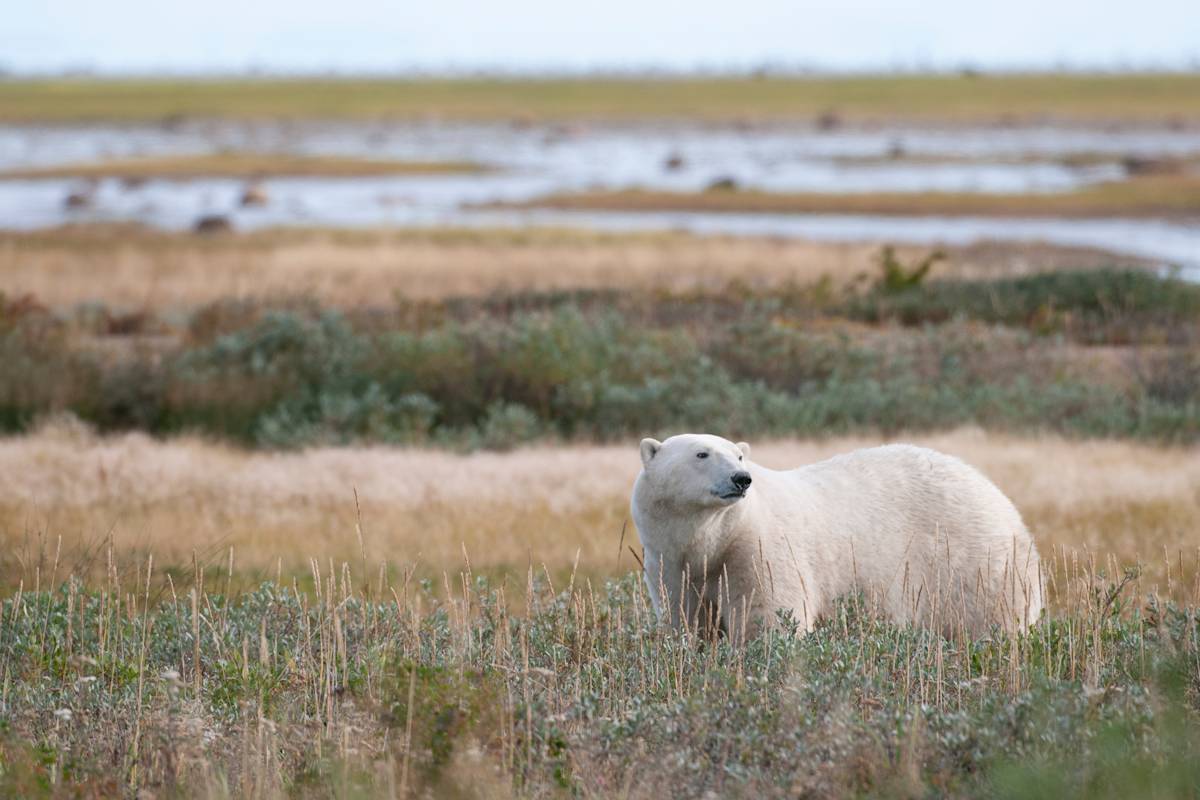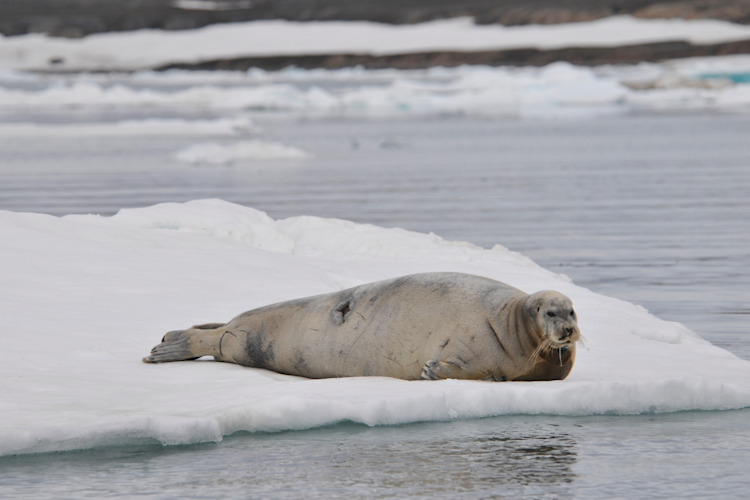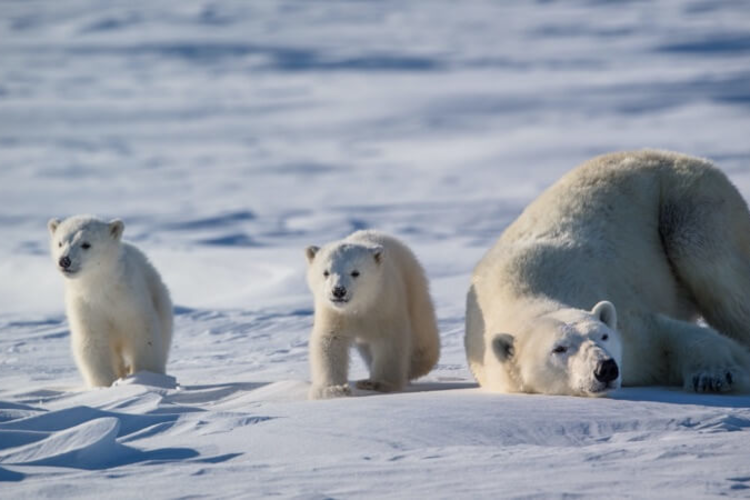Caribou, muskox, birds and bird eggs, beached whales, seals, fish, berries, and other plant foods … humans and other animals have been successfully living off the land during the ice-free summers in the High Arctic for millennia. Why can’t polar bears just do the same?
The answer: evolution! Over the past 500,000 years or more, polar bears have become hyper-specialized to living on the Arctic sea ice and preying on seals. Their adaptations to this lifestyle are evident in their behavior, physiology, and ecology. Studies show that even the size and structural integrity of the polar bear’s skull and teeth are adapted to surviving on soft blubber and flesh. This extreme specialization is the beauty of the bears as well as their bane. It makes them the undisputed top predator in the Arctic marine ecosystem but also extremely vulnerable to changes in their environment.
Curious by nature
Every now and then a story will pop up in the media about polar bears that were spotted eating prey other than seals and how this shows their potential to adapt to a life without sea ice. Unfortunately, this is wishful thinking. While polar bears are extremely specialized, they are also very curious, intelligent, and opportunistic animals. If something looks new and potentially edible, they are very likely to want to take a closer look and an experimental nibble.
This holds true for most polar bears, especially for those that are summering on land while they wait for the sea ice to re-form or those that find themselves in areas with few seals. Polar bears in such situations may eat berries, kelp, bird hatchlings, meadow voles, and the like if there are no seals to be found. However, none of these food items are a viable option for keeping polar bears alive long-term; only blubber from seals (and the occasional whale carcass) has a high enough energy content to do this. A round polar bear is a happy polar bear, and it requires a lot of energy to keep a polar bear plump!


















